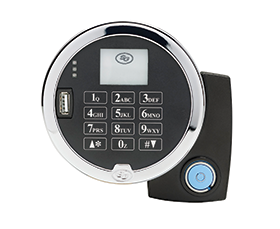

Electronic locks entered the market in the late 90s as technology increased and various lock companies quickly tried to design electronic locks to meet requirements that the existing locks provided, only now a password or code would be entered on a keypad. Electronic locks moved from a single code to multiple codes so that more than one person could have their own code.
The next big development in these locks was to have a time-delay feature available on the lock. This would prevent the lock from opening immediately after the code had been entered. The lock would first count down a period of time (e.g., 20 min) that had been programmed into the keypad. After the lock had counted down the set time, the custodian could then enter their code a second time to unlock the lock.
This became extremely popular because the whole idea of security is to buy time. We all know that anyone who wants to break into a safe or vault will get in. We are simply trying to buy time to either deter the perpetrators or so that security or police can get to the robbery before the safe is opened. This was a great deterrent for many years, but as time goes on and the criminals become more intelligent, this on its own was no longer a safe option.
The lock companies came up with a duress module and code. This would allow the custodian to send a silent alarm by changing a single digit in their code. It was not long and the criminals learnt how to easily overcome this problem; many armed robberies on safes are committed with the help of the staff.
Badger Distribution has been installing Sargent and Greenleaf A Series locks since 2009 and to date it is not aware of any successful robbery on any of these locks yet. These locks were initially designed to be installed on to ATM safes, but with the number of armed robberies in South Africa, the A Series locks are being used in retail stores as well.
The company believes that the biggest reason for this is that there are no codes kept on site. If anyone wants to open a lock with OTC they must call a control room. This involvement of a third-party outside of the safe’s location is the single deterrent for preventing criminals from attempting to rob a safe that is protected by a one-time code (OTC) lock.

© Technews Publishing (Pty) Ltd. | All Rights Reserved.